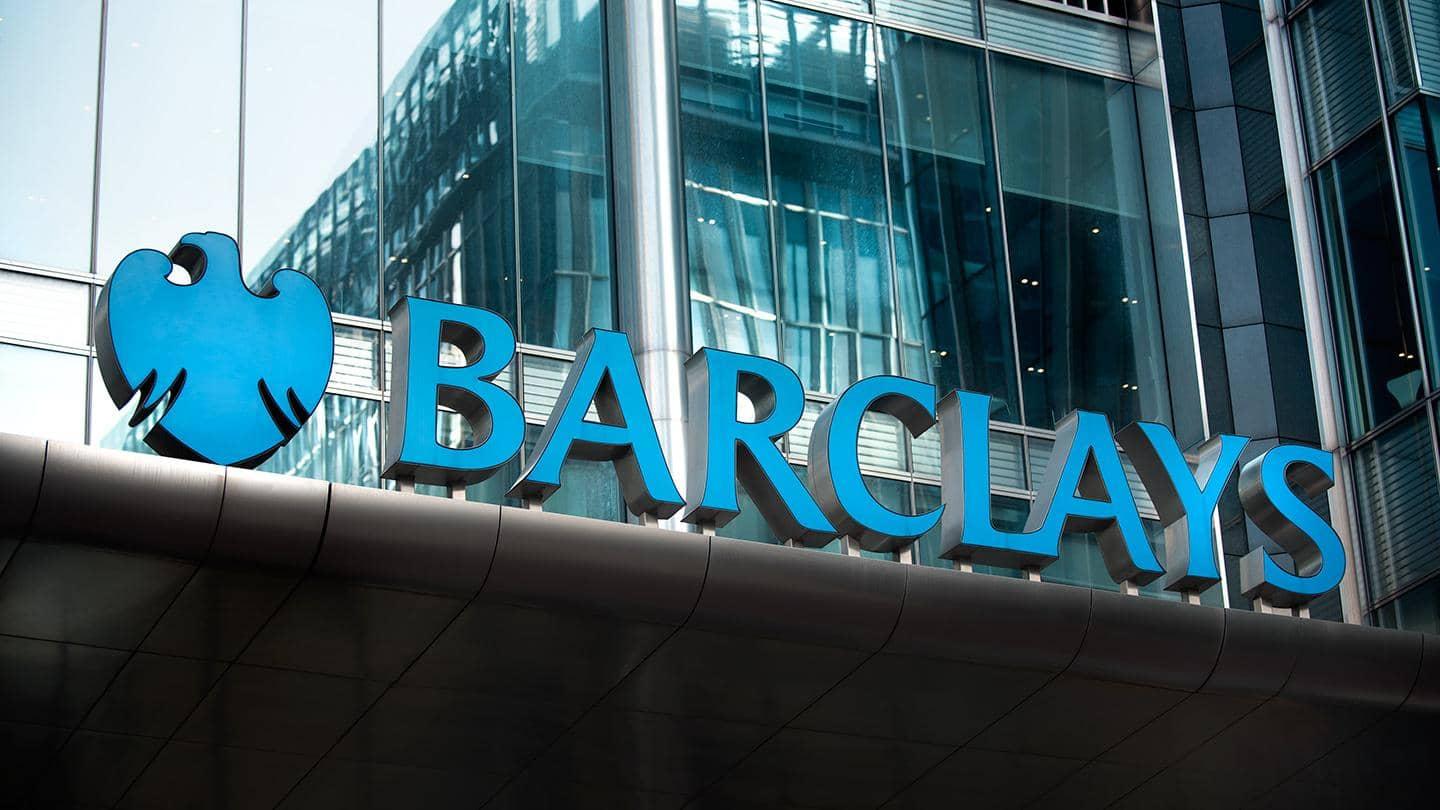Barclays data anayst, a global financial institution with a rich history spanning over 300 years, plays a vital role in the global banking ecosystem. At the heart of its operations is its data team, responsible for driving insights, making informed decisions, and maintaining its competitive edge. Data analysts are pivotal in transforming raw data into meaningful, actionable insights that help shape the bank’s strategies. This article explores the role of a data analyst at Barclays, the skills required, the tools used, and the career trajectory.
Role of a barclays data anayst

A barclays data anayst is responsible for interpreting and managing data, identifying trends, and providing insights that inform key business decisions. The role involves working across departments such as retail banking, investment banking, wealth management, and risk management. Given the data-driven nature of the banking sector, the role of a data analyst is both dynamic and critical to the organization’s success.
Barclays data anayst are often tasked with analyzing financial data, customer behavior, risk assessments, and operational performance. Their findings are then presented to senior management and stakeholders to help optimize products, improve customer experience, and mitigate risks.
Key Responsibilities:
- Data Collection & Preparation: Data analysts collect large datasets from various sources, ensuring they are clean and structured. This process often involves working with different data management platforms and tools.
- Data Analysis & Interpretation: They analyze data to uncover trends, patterns, and correlations. These insights are critical for making informed decisions in areas like investment strategies, risk management, and customer relations.
- Reporting & Visualization: After analysis, the results are presented to stakeholders in a clear and concise manner, often through reports or data visualizations. These visualizations help non-technical team members grasp complex data insights.
- Collaboration: Data analysts work closely with other teams, including data scientists, product managers, and business leaders, to align data findings with business objectives.
- Regulatory Compliance: Since Barclays operates in a heavily regulated industry, data analysts ensure that the bank’s data handling practices comply with regulatory requirements.
Essential Skills for a barclays data anayst
To excel as a data analyst at Barclays, professionals need a combination of technical skills, industry knowledge, and analytical thinking. The banking industry’s complexities require data analysts to be well-versed in finance, risk management, and business operations.
1. Technical Proficiency
A strong foundation in data analysis tools and programming languages is crucial. barclays data anayst typically use the following tools and technologies:
- SQL (Structured Query Language): SQL is essential for querying and managing large databases. Data analysts at Barclays frequently use SQL to extract and manipulate data from relational databases.
- Python/R: These programming languages are often used for advanced data analysis, statistical modeling, and automation.
- Excel: While more advanced tools exist, Excel remains a widely used tool for managing data, performing calculations, and creating visualizations.
- Power BI/Tableau: For data visualization and reporting, barclays data anayst often use tools like Power BI and Tableau to create interactive dashboards and visual representations of data.
- SAS (Statistical Analysis System): SAS is commonly used in financial institutions for advanced analytics, risk management, and business intelligence.
2. Analytical Thinking
Data analysts at Barclays must have strong analytical skills to interpret data accurately. This includes the ability to:
- Understand complex datasets
- Identify trends and anomalies
- Develop hypotheses and validate them through data
Analytical thinking also involves the ability to assess risks, which is crucial in the banking sector where financial decisions often have significant consequences.
3. Attention to Detail
Given the large volumes of data handled by Barclays, attention to detail is paramount. Even small errors in data analysis can lead to inaccurate conclusions and flawed business strategies. A meticulous approach ensures the accuracy and reliability of insights derived from data.
4. Business Acumen
Understanding the banking industry is essential for barclays data anayst. They must be aware of the bank’s operations, market trends, and customer behavior. This knowledge allows analysts to interpret data in a meaningful way, aligning insights with business objectives.
5. Communication Skills
Data analysts must be able to translate their findings into actionable insights for non-technical stakeholders. This requires excellent communication skills, including the ability to:
- Present complex data clearly
- Tailor presentations to different audiences
- Create impactful visualizations that effectively convey key insights
Tools and Technologies Used by barclays data anayst
Barclays employs a variety of advanced tools and technologies to manage and analyze data. Some of the most common tools used by data analysts at Barclays include:
1. Big Data Technologies
With the rise of big data, Barclays uses technologies like Hadoop and Spark for managing and processing large datasets. These platforms allow data analysts to handle vast amounts of data efficiently and perform complex calculations at scale.
2. Cloud Platforms
Barclays increasingly relies on cloud platforms for data storage and analysis. Tools like Microsoft Azure and Amazon Web Services (AWS) provide scalable infrastructure for managing big data, running machine learning algorithms, and deploying analytics tools.
3. Machine Learning and AI
Barclays incorporates machine learning and AI in various aspects of its operations, including risk management, fraud detection, and customer personalization. Data analysts often work with data scientists to build and train machine learning models that can provide predictive insights.
4. Data Warehousing
Data warehousing solutions like Snowflake and Teradata are essential for storing and managing structured and unstructured data. These platforms provide a central repository for data, making it easier for analysts to query and analyze data across departments.
5. Business Intelligence Tools
Business intelligence tools like Power BI and Tableau play a significant role in data reporting and visualization. These tools enable data analysts to create interactive dashboards that provide real-time insights into business performance, customer behavior, and market trends.
Career Path and Growth Opportunities
The role of a data analyst at Barclays offers numerous opportunities for career progression. Barclays provides a clear career path, allowing analysts to specialize in different areas or transition into more advanced roles.
1. Data Scientist
Many data analysts at Barclays eventually move into data science roles. Data scientists work on more complex problems, including predictive analytics, machine learning models, and advanced statistical analysis. This transition requires a deeper understanding of mathematics, programming, and machine learning algorithms.
2. Business Intelligence Analyst
A data analyst with a strong focus on reporting and visualization may pursue a career as a business intelligence analyst. In this role, the analyst specializes in creating dashboards, reports, and data-driven recommendations to guide strategic decisions.
3. Data Engineer
Data engineers focus on the architecture and infrastructure behind data systems. barclays data anayst with a strong technical background may transition into this role, where they design, build, and maintain data pipelines and databases that ensure seamless data flow across the organization.
4. Risk Analyst
Given the importance of risk management in banking, data analysts may choose to specialize in risk analysis. In this role, analysts assess and manage financial risks, working closely with the risk management and compliance teams to mitigate potential threats to the organization.
5. Management and Leadership Roles
Experienced data analysts with a strong track record can move into management roles, overseeing teams of data analysts, data scientists, and other professionals. Leadership roles involve guiding the organization’s data strategy, driving innovation, and ensuring that data is leveraged effectively across the business.
Challenges Faced by barclays data anayst
Despite the rewarding nature of the role, data analysts at Barclays face several challenges:
1. Data Security and Privacy
With the rise in cyber threats and stricter regulations around data privacy (such as GDPR), data analysts must be vigilant about data security. Handling sensitive customer and financial data requires strict adherence to privacy laws and internal security protocols.
2. Managing Large Datasets
Barclays handles vast amounts of data, which can be challenging to manage and analyze efficiently. Analysts often need to work with big data technologies and cloud platforms to process these large datasets in a timely manner.
3. Regulatory Compliance
The banking sector is heavily regulated, and data analysts must ensure that their work complies with various legal requirements. This involves staying updated on changes in financial regulations and ensuring that data handling practices are transparent and compliant.
4. Balancing Speed with Accuracy
In the fast-paced world of finance, timely insights are crucial. However, data analysts must balance the need for speed with the requirement for accuracy. Ensuring that insights are both reliable and delivered on time is a constant challenge in the role.
Conclusion
A barclays data anayst plays a crucial role in shaping the bank’s strategies and driving business growth. With a blend of technical skills, business acumen, and analytical thinking, data analysts transform raw data into actionable insights that help Barclays stay competitive in a rapidly evolving financial landscape. Whether specializing in risk analysis, business intelligence, or data engineering, data analysts at Barclays enjoy numerous opportunities for career growth and development. As data continues to drive innovation in the banking sector, the role of the data analyst will only grow in importance.


